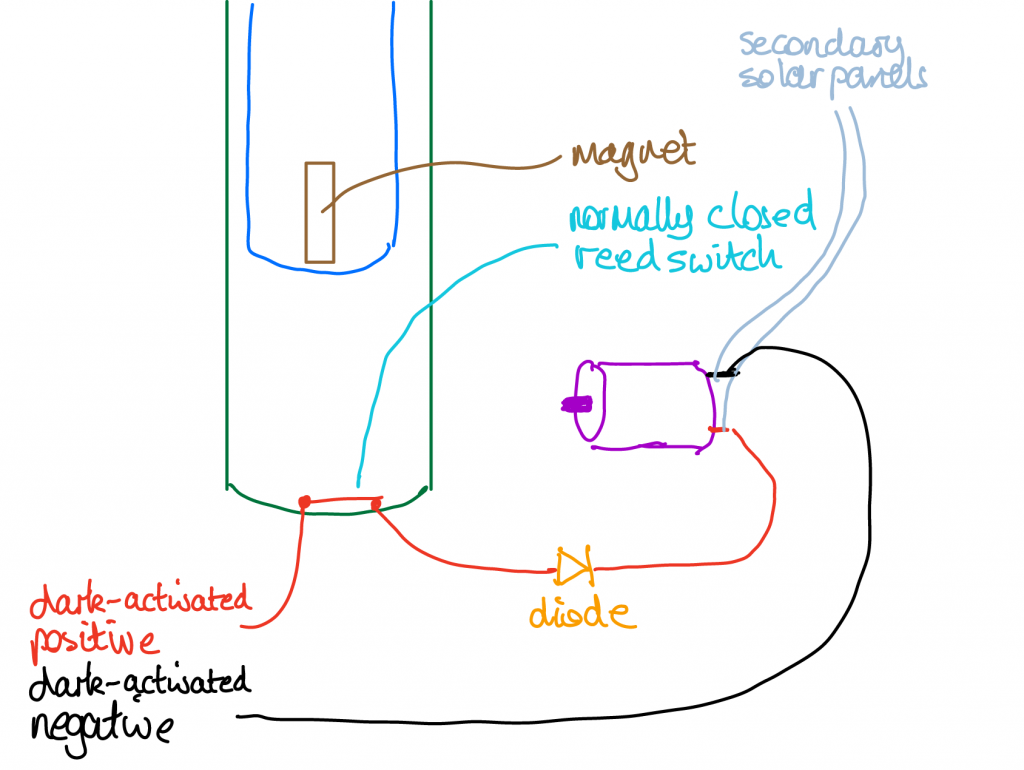There are all sorts of commercially available sun trackers for solar panels but they are use sophisticated engineering / electronics.
Until now, there’s been nothing out there for the hobbyist. Have a look at this proof of concept video:
Details on driving the motor
Thanks to my good friend Bart, NightHawkInLight and NASA for one part of the solution…
The above video shows how to power the motor during the day for tracking the sun.
However, when the day draws to a close and the main solar panel is receiving no light, there’s still one thing left to do…
Resetting things ready for the following day
We have to drive the motor to rotate the plate another 180° to allow the inner tube to return to the starting position, resetting the solar panel so it points in the direction it was in at the start of the day.
That part is easy with the aid of a diode, reed switch and a magnet.
The Solar Lithium Ion Battery Charger module already has the capability to deliver power (from the battery) when darkness falls, so we use this power to drive the motor some more.
To stop the motor at the right time is where the diode, reed switch and magnet come into play:

When dusk falls, dark-activated power from the battery comes on. This drives the motor via the closed reed switch and the diode.
When the inner tube has returned to the bottom, the magnet activates the reed switch, opening it and cutting power to the motor. This leaves the inner tube at the bottom, with the main solar panel pointing in the direction it started at the beginning of the day.
When daylight arrives again, the secondary solar panels will once more start driving the motor as dictated by the sun’s position. The diode is there to protect the battery from any reverse voltage spikes generated by the motor.
I haven’t checked the exact operation of the secondary solar panels and motor yet, so another reed switch may be needed to prevent the dark activated power from leaking through them when the inner tube is being lowered by the motor.
That’s it for now. I’d love to hear your comments – especially if you spot any flaws!